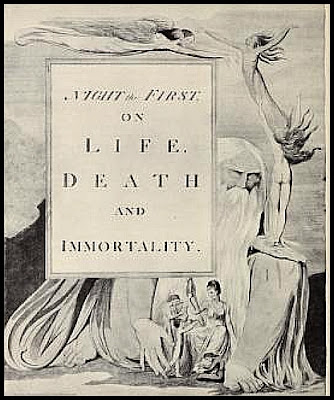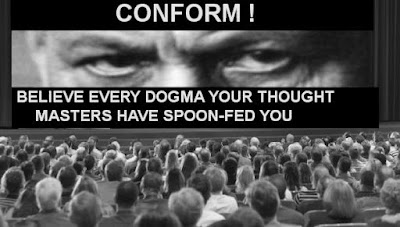The Bigelow Institute for Consciousness Studies (funded by the very wealthy businessman Robert Bigelow) recently published a series of prize-winning essays attempting to answer the question of what is the best evidence for life after death. Most of the results are very impressive. Because there were very large money prizes to be won ($500,000 for first place and $300,000 for second place), the contestants seemed to go the extra mile, typically writing essays that are more like small books rather than mere essays. These long essays are loaded with references to original sources, which allow you to investigate some of the discussed topics further. The best thing is that you can very conveniently read all of the prize-winning essays by going to the page here. Each essay must be read as a .pdf file.
The first prize essay by Jeffrey Mishlove covers a very wide variety of topics such as near-death experiences, what are called "after-death experiences," evidence for reincarnation, mental mediumship, physical mediumship, and ESP. There are many links to video clips. I never knew it was possible to embed video clips in .pdf files. Many of the clips are of people who Mishlove personally interviewed. I like the technique of including many video clips of eyewitnesses and people who personally experienced the paranormal. Skeptics sometimes try to portray those who report the paranormal as being unhinged or kooky, but the truth is that people who report the paranormal tend very strongly to be ordinary people who talk in ordinary tones and expressions. You can find that out by playing some of the clips in Mishlove's long essay.
Mishlove has a notable eyewitness account of his own to report, that before learning of his uncle's death, Mishlove had a very vivid dream in which it was like his uncle was talking to him at length. Concerned, he wrote his mother asking about his uncle's health status, and got a phone call two days later saying that he died on the same day as Mishlove's dream.
The second prize essay by Pim van Lommel MD discusses mainly near-death experiences, a topic he has researched for many years. He reports observing in 1969 a near-death experience in a man undergoing cardiac arrest, at a time in which the term "near-death experience" hadn't even been coined. On page 33 of his essay we read an experience personally related to him by someone else, an experience of interest to people such as me who photograph orbs. Here is the account he received:
"At the end of 2000 my eldest son died by suicide. From the police report estimating time of death, I learned it was about the same time a curious thing happened to me. I saw a sphere of light enter my window and then enter my forehead whereupon I was suddenly ‘awareness without a body', in a place profoundly lit, with a sense of spacious depth but without any features. I felt profound warmth and love, felt my son was ok, and heard the words, 'There is nothing wrong and there has never been anything wrong.' Somehow, I knew this to be true with every cell of my body even though he had been suffering with pain for years. The next day I learned of his death."
The third-prize essay by psychologist Leo Ruickbie shows a lot of scholarship about the relevant observational topics such as apparition sightings, clairvoyance and similar topics. I certainly must credit Ruickbie (a psychology PhD) as having done more to study the paranormal than 99% of all psychology PhD's, who as a whole are very unscholarly on this topic.
We then have eleven "second tier" essays by contestants who each seem to have won $50,000. The first of these is by Julie Beischel, a PhD who for many years has tested modern-day mediums, apparently finding that some of them stood up very well to rigorous testing protocols. The second "second tier" essay is an essay by Stephen E. Braude that is less powerful than most of the other essays in terms of presenting evidence, and seems mainly devoted to questions such as what qualifies as good evidence.
The third $50,000 winner essay is by philosopher Bernardo Kastrup, whose title indicates that he will provide "a Rational, Empirical case for postmortem survival based solely on mainstream science." I object to the implied idea, that we should perhaps not pay attention to that which is outside of so-called "mainstream science." Good reliable observations appearing in large numbers should be respected and discussed and studied, regardless of whether they have been declared taboo by people calling themselves "mainstream scientists," who have a very bad habit of declaring reports of many varieties of human experience as things that are "out of bounds" (mainly because they conflict with the unproven dogmas of such scientists).
Kastrup's essay is cluttered up with some references to not-very-convincing neuroscience studies that I suspect used Questionable Research Practices (as a large fraction of all experimental neuroscience experiments do these days). He has some idea that brain function is decreased when you take so-called mind-expanding drugs, but his case for this rests on marginal brain scanning studies that probably are of low statistical power, and probably fail to show robust evidence for a strong effect. Kastrup's case is largely philosophical, and his essay would have been far stronger if he had not started out by deciding to admit only evidence that would be classified as "mainstream science."
But there is a way to make a case for life after death without leaving so-called "mainstream science." Following the latter part of the essay here, that way is to concentrate on low-level details of the brain, and to show all of the ways in which the brain is unsuitable for explaining the main mental phenomena of humans, such as instantaneous acquisition of new memories, instantaneous memory retrieval, very fast thinking, very fast recognition, understanding, insight and so forth. This approach involves a very careful study of things such as the very short lifetimes of brain proteins, the low stability of synapses and dendritic spines, the lack of any actual read or write mechanism in the brain, the absence of any evidence that brains do any such thing as converting learned information to neural states or synapse states, the variety of very high noise levels in the brain which should prevent fast accurate recall, the lack of any coordinate system or indexing system in the brain that would allow instant memory retrieval, the unreliability of synaptic transmission in the cortex, and so forth. The approach leads to a life after death conclusion, because if our brains cannot explain our minds and our memories, there is no reason to think that such things should perish when our brains perish. But Kastrup fails to take that approach, and his essay ends up seeming weaker than most of the other essays.
The fourth $50,000 winner essay by Elizabeth G. Krohn is mainly an eyewitness account of remarkable paranormal experience, which includes an account of an apparent gain of psychic functioning after being struck by a lightning bolt. It makes interesting reading, and its autobiographical approach is a nice change of pace from the other essays.
The fifth $50,000 winner essay by Jeffrey Long MD is by one of the leading researchers of near-death experiences, and is well worth reading. The sixth $50,000 winner essay by Michael Nahm is a discussion of an extremely wide variety of evidence relevant to life after death, one that shows considerable depth of study and scholarship.
The seventh $50,000 winner essay by Sharon Hewitt Rawlette has some fascinating accounts. We read this on page 7 an example of the very common phenomenon called deathbed visions:
"For instance, in one case, a five-year-old girl named Lalani who was dying of leukemia began to talk about her interactions with someone named 'George,' whom no one else in the room could see. Everyone thought she was imagining things until one night when her grandmother went through a photo album with her. Her grandmother turned to a page Lalani had never seen before, and Lalani suddenly exclaimed, 'There’s George!' The man in the photograph was the grandmother’s own godfather, who had died when the grandmother was herself only five years old. Though Lalani had no normal way of knowing it (according to the family), his name was indeed George."
We read this very interesting account on page 32:
"In another case cataloged by Rivas, Dirven, and Smit, this one investigated by Dr. Melvin Morse and Paul Perry, Olga Gearhardt of San Diego, California, was receiving a heart transplant. Her whole family had gathered at the hospital during her surgery, except for her son-in-law, who had a phobia of hospitals. At 2:15am, the new heart would not beat properly and then stopped completely. The resuscitation process took hours, but finally her new heart was persuaded to function properly. Meanwhile, the son-in-law, at home, woke up at 2:15am to see Olga standing at the foot of his bed. She was so lifelike that he thought it was actually her, that her plans must have changed and, instead of getting surgery, she had come to his house. He asked her how she was doing, and she told him, 'I am fine, I’m going to be all right. There is nothing for any of you to worry about.' When she disappeared, he got up and wrote down the time and what she had said. The next morning, when Olga came out of surgery, she mentioned 'the strange dream' she’d had, which appears to have been a near-death experience. She not only had the experience of being out of her body watching the doctors operate, but she went to her family in the waiting room and tried to communicate with them. Unable to get through, she then decided to go to her son-in-law at his home, where 'she was sure she had stood at the foot of her son-in-law’s bed and told him that everything was going to be all right.' ”
The eighth $50,000 winner essay is by a man who devotes himself to describing the career of a Brazilian medium named Chico Xavier, who authored some 450 books, which he claimed were mainly produced with the help of discarnate spirits. A shorter summary of this case can be found here. I haven't studied the case, so I won't comment on it.
The ninth $50,000 winner essay is a very strange and speculative essay by Nicolas Rouleau, who like Kastrup includes some not-very-convincing brain studies trying to support his ideas. There's a lot of talk about electromagnetism and geomagnetic fields that I don't find very convincing. On page 37 of his essay he refers to the "electromagnetic forces that give rise to experience and thought," an idea that is as implausible as the claim that brains give rise to experience and thought.
I recommend skipping the tenth $50,000 winner essay, one by David Rousseau and Julie Billingham. It features a bunch of boldface principles that are sometimes doubtful or untrue. One is the untrue statement that "a hypothesis cannot be proven, we can only argue for its plausibility." Another is the claim that "naturalistic things are the things that science can study," a principle that has long been used as an excuse for not studying the paranormal or the seemingly supernatural. If scientists were to follow such a principle, they would not study global warming, which is presumably an effect produced not by natural causes but by artificial human causes; and scientists would also not be looking for radio signals from extraterrestrials, things which would be of artificial origin rather than a natural origin. You won't learn much of anything in this essay that isn't discussed in the other essays.
Finally in the list of $50,000 winner essays we have a very cleverly conceived essay by Michael Tymn. Tymn imagines a kind of courtroom battle between two sides, one that believes in life after death, and one that does not. We read the prosecution case in favor of life after death, in which various witnesses are called, all actual people who wrote about the paranormal. Tymn makes up the questions that are asked, but all of the answers given seem to be quotations from the published works of the witnesses. The overall result is a very readable presentation of evidence for life after death.
On the same page we have "honorable mention" winners that each won a $20,000 prize. One of these is an essay claiming to provide "definitive proof" of reincarnation, based on a single case. The case fails to do that. We have similarities between statements of a child and the career or death of a pilot dying in World War II. The similarities could be the result of coincidence, or of some kind of paranormal knowledge acquisition (clairvoyance or ESP) that does not involve reincarnation, such as telepathy between a living person and a person living in some afterlife realm. A very scholarly and thorough entry in the "honorable mention" category is the almost-book-length essay of Walter Meyer zu Erpen, covering an extremely wide variety of topics (and including some very interesting personal observations).
Of the $20,000 prize winners, perhaps the best is an essay by hospice doctor Christopher Kerr, who has long studied end-of-life visions and dreams in the dying. Thus far I have only been able to find rather skimpy papers or articles by Kerr on this topic, but here we have a long essay with much data, case examples and links to video interviews. Kerr reports this:
"Shortly before death, the dying have dreams and visions of their predeceased loved ones, scenes of vivid and meaningful reunions that testify to an inexplicably rich and transformative inner life. The phenomenon includes a lived, felt, often lucid experiential reality whereby those loved and 'lost' return to the dying in ways that cannot be explained by memory alone. Children and parents sometimes lost decades earlier come back to put patients back together and help them transition peacefully. At the precise moment we associate with darkness, loss, physical decline, and sadness, their presence helps the dying achieve peace, comfort, and forgiveness, which suggests an existence beyond our bodily form."
Kerr uses the phrase "shortly before death," but I have well-documented reasons to suspect that something along such lines may sometimes get started a year or more before a person's death. Reporting on a study of 1500+ patients in Buffalo, New York, Kerr states this: "The data confirmed that the vast majority of dying patients, shortly before death, have these comforting dreams and visions that most commonly summon predeceased loved ones."








